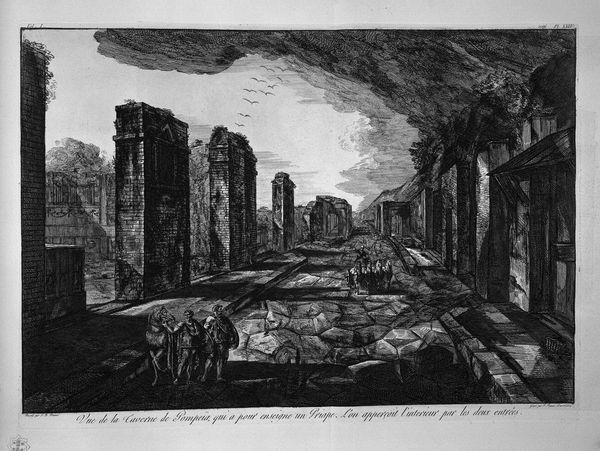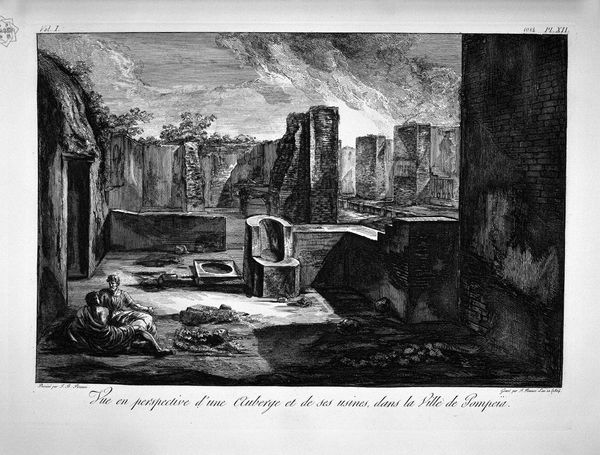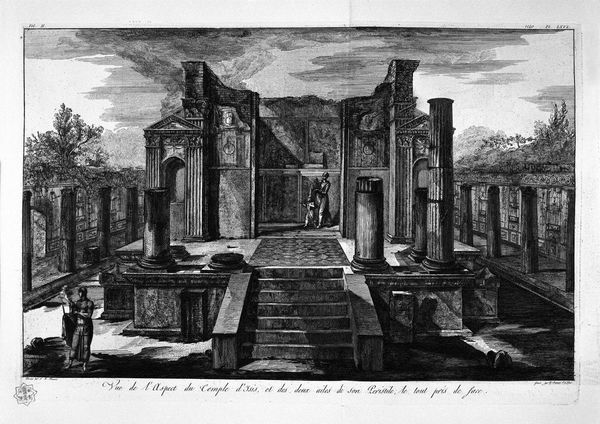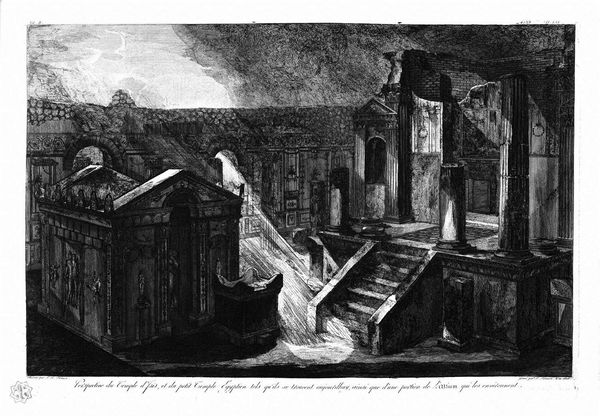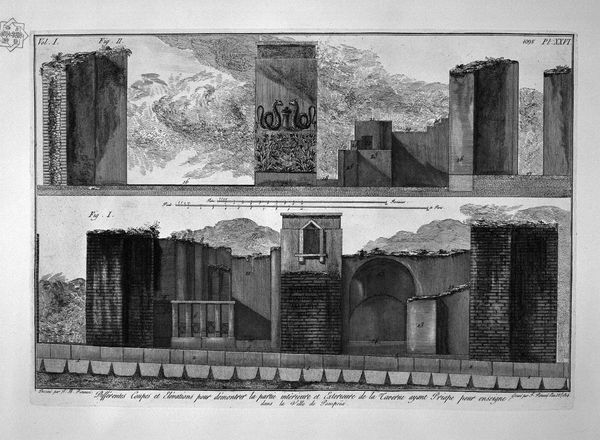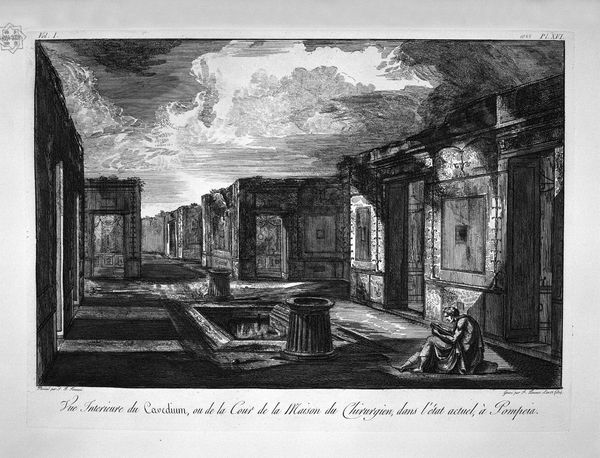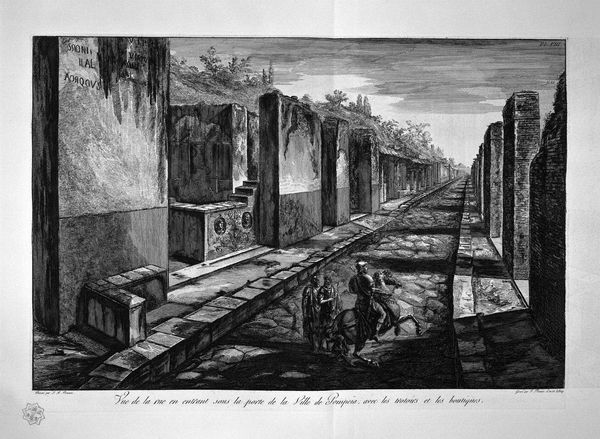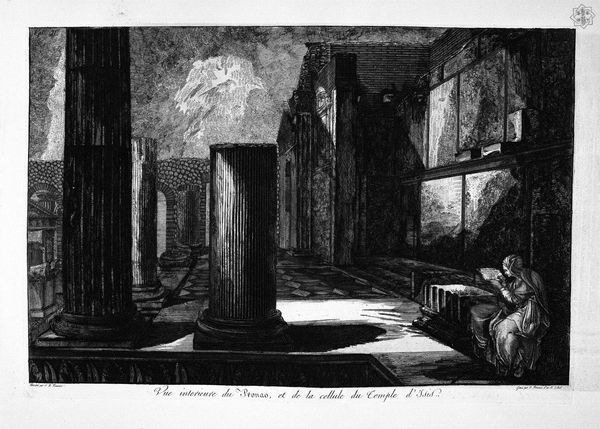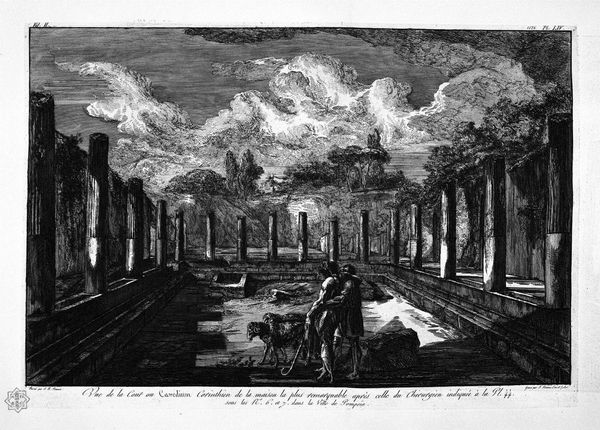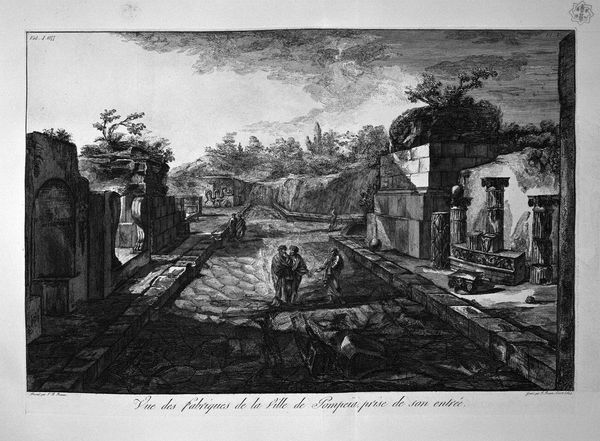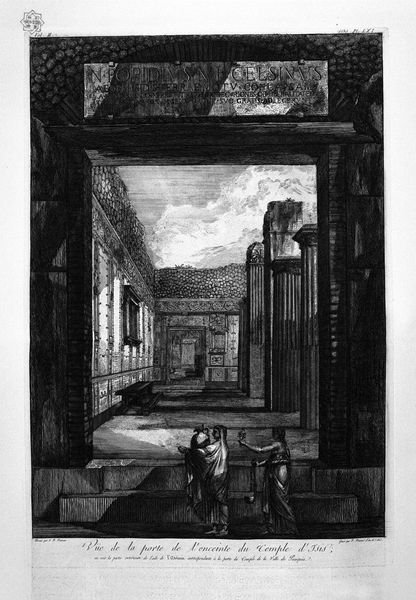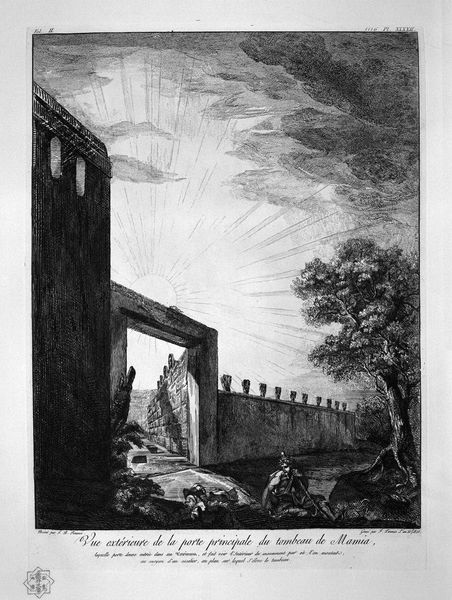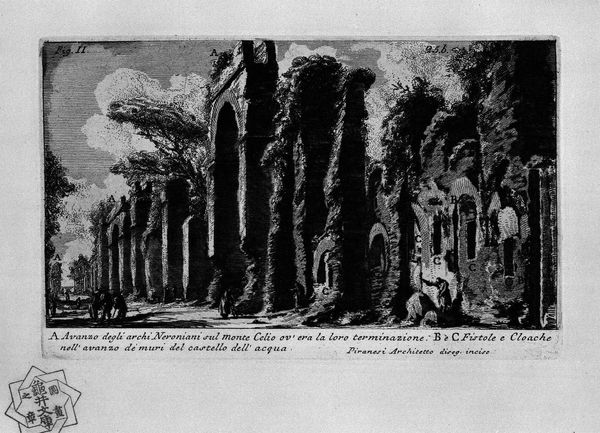
print, etching, engraving
#
neoclacissism
# print
#
etching
#
perspective
#
ancient-mediterranean
#
cityscape
#
history-painting
#
engraving
Copyright: Public domain
Editor: This is a print called "View of buildings taken from the entrance of the city of Pompeii" by Giovanni Battista Piranesi. It seems to be an etching or engraving. I'm struck by the contrast between the imposing ruins and the tiny figures in the distance; it gives a real sense of the passage of time. What historical context can you provide for this depiction? Curator: Piranesi’s vision of Pompeii comes during a specific moment in the history of archaeology and representation. He's working in the 18th century, a period deeply engaged with the rediscovery of antiquity, fuelled by the excavations at Pompeii and Herculaneum. His prints weren’t just documents; they actively shaped the public's imagination of these ancient sites. Notice how he exaggerates the scale and drama of the ruins. Why do you think he chose that particular approach? Editor: Perhaps to inspire a sense of awe and respect for the past, or to critique the present by showing the grandeur that was lost? Curator: Exactly. Consider the role of the *vedute*, the Italian tradition of view-painting, which Piranesi updated through the print medium. The print as a commodity enabled these idealized views of Roman antiquity to circulate widely among Grand Tourists and intellectuals. The “truth” of the ruins becomes less important than the experience they provoke. It becomes about constructing and disseminating ideas about Rome's legacy, doesn’t it? Editor: So, it's not just about what Pompeii *was*, but about what Rome *meant* to 18th-century Europe? Curator: Precisely. The politics of imagery are deeply embedded here, in promoting ideas of classical ideals in art and architecture and reminding the European elites about power and cultural dominance. Piranesi offers us a compelling way to look at the classical past through the lens of contemporary needs. Editor: That's fascinating. I hadn't considered the political dimension so explicitly. It makes me rethink the role of these archaeological records. Curator: Indeed. Art and archaeology always intersect with contemporary values and needs. Studying the context makes all the difference.
Comments
No comments
Be the first to comment and join the conversation on the ultimate creative platform.
